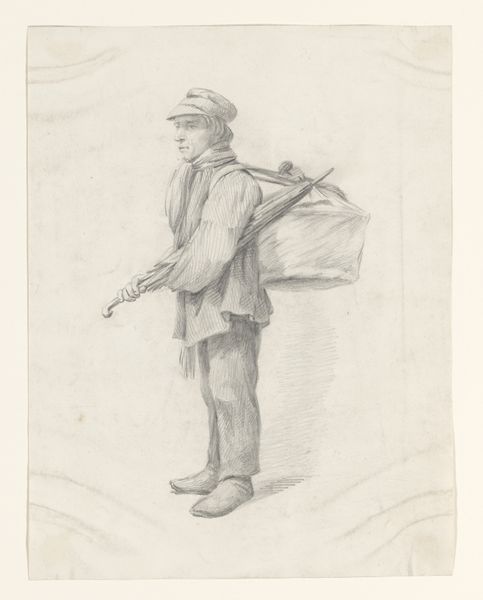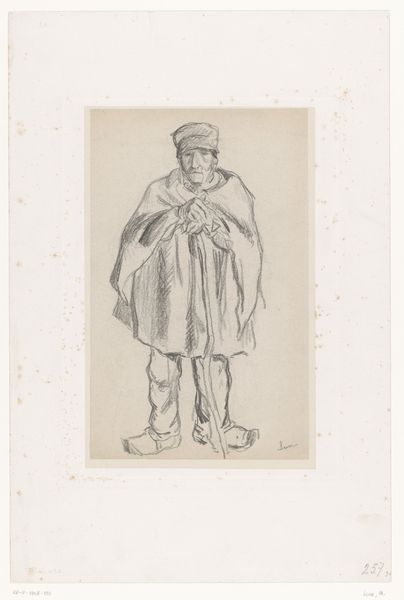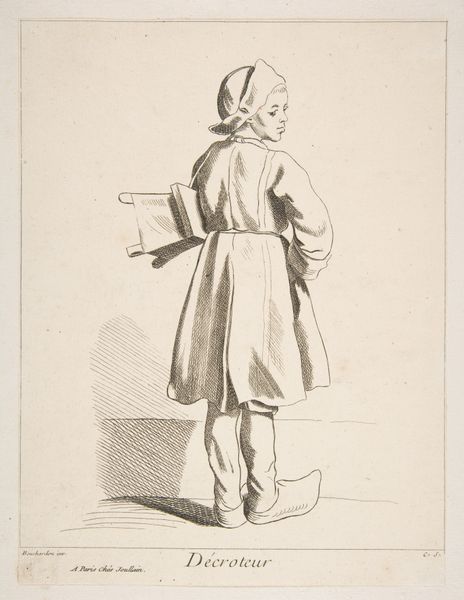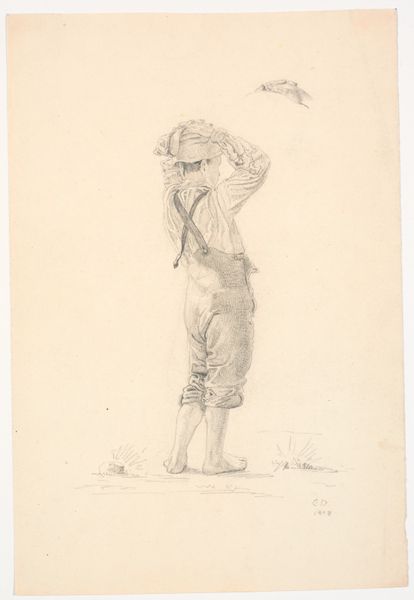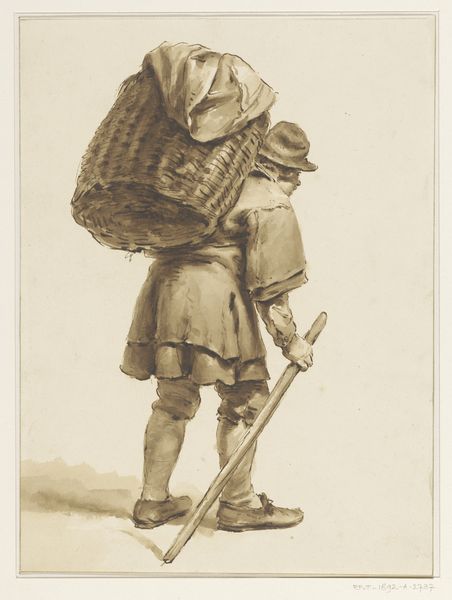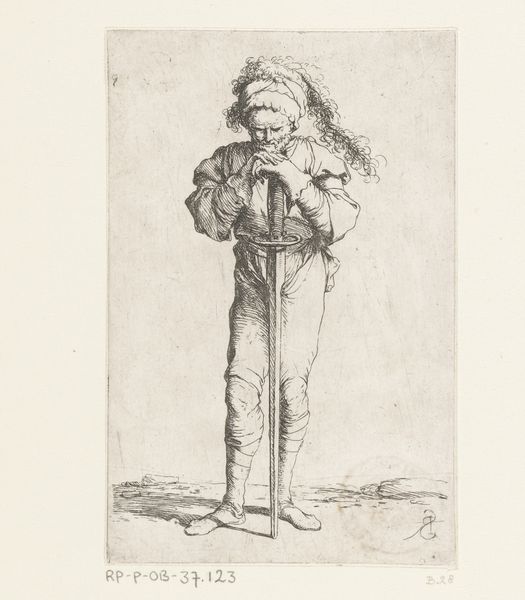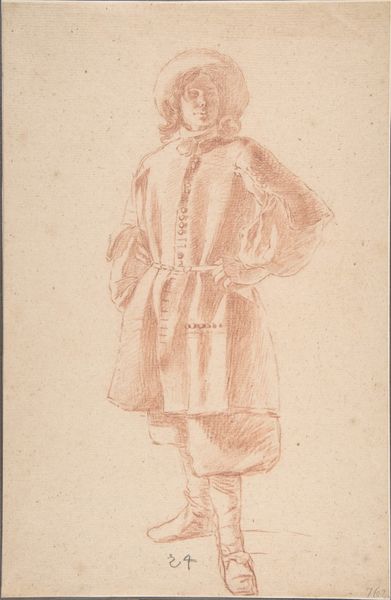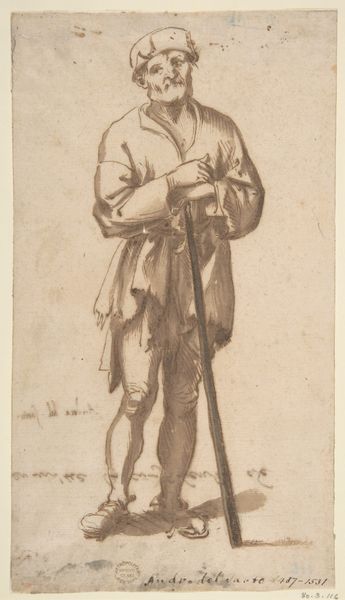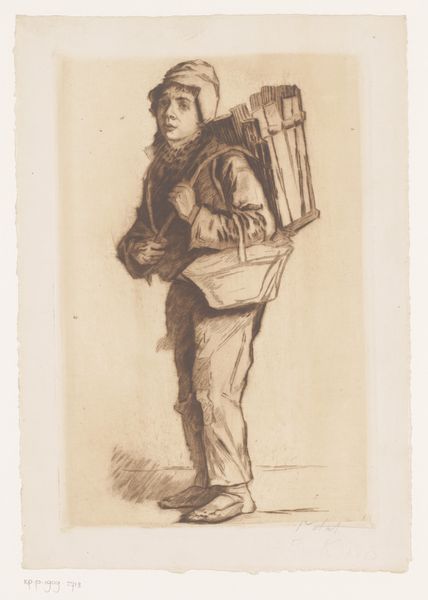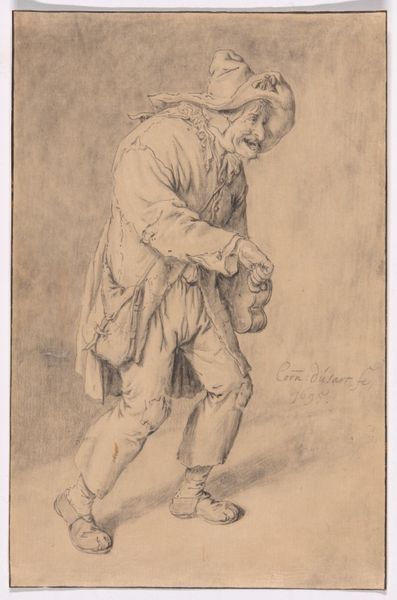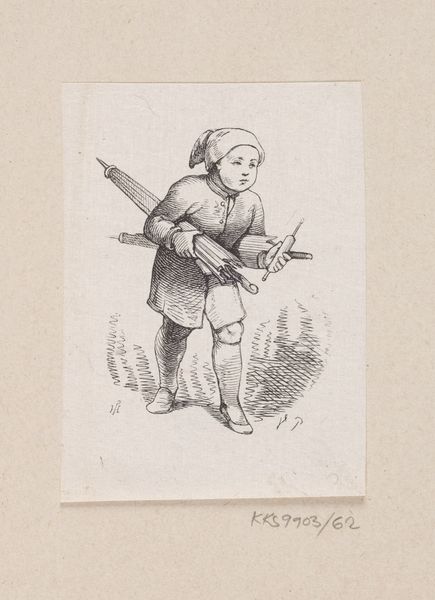
drawing, paper, pencil
#
portrait
#
drawing
#
light pencil work
#
pencil sketch
#
figuration
#
paper
#
romanticism
#
pencil
#
sketchbook drawing
#
pencil work
#
genre-painting
#
realism
Dimensions: height 333 mm, width 210 mm
Copyright: Rijks Museum: Open Domain
Curator: Well, what a charming find. Immediately, I feel transported to another era, it’s dreamy, almost faded—like an old photograph or half-remembered tune. Editor: Indeed. This drawing, "Standing Flute Player" by Alexander Cranendoncq, dates from sometime between 1809 and 1869. You can find it in the Rijksmuseum collection. It’s a delicate pencil rendering on paper. Curator: Pencil, yes, look how Cranendoncq teases out form with the barest minimum of means. It’s not overworked or fussed over—just a pure capture of the fleeting. And I love that he isn’t idealizing his subject; there’s a charming awkwardness about the youth’s pose, a realness. Editor: That realism places him within artistic trends that valued direct observation. Although the period is tricky: it sits at a stylistic crossroads of Romanticism, which embraced emotional intensity, and early Realism which favored portraying everyday life. We see that blend in his somewhat idealized garments yet a humble presentation. Curator: He looks a bit like he's stepped out of a play, doesn't he? Like a figure in a pastoral scene. And you know, it's more than just what he's wearing. It’s the quality of the light and the slightly theatrical set of his mouth. I am curious, I wonder about his story. What song does he play, for whom? Editor: Perhaps the drawing itself is his story. These types of genre paintings or figurative works gained traction as democratization expanded artwork audiences and allowed for wider social and artistic circles in exhibiting the common soul in ways the establishment never could. It humanizes him, makes the viewer and his music familiar, approachable. Curator: Absolutely! It bridges a gap. It makes history less…stuffy. Editor: Well said. It's a small piece, this simple portrait, yet opens so many larger windows. I am glad that the establishment saw this portrait and how the institute preserves our social values. Curator: And I'm glad we had a moment to consider his tune together. It enriches my own experience with the art so deeply.
Comments
No comments
Be the first to comment and join the conversation on the ultimate creative platform.
